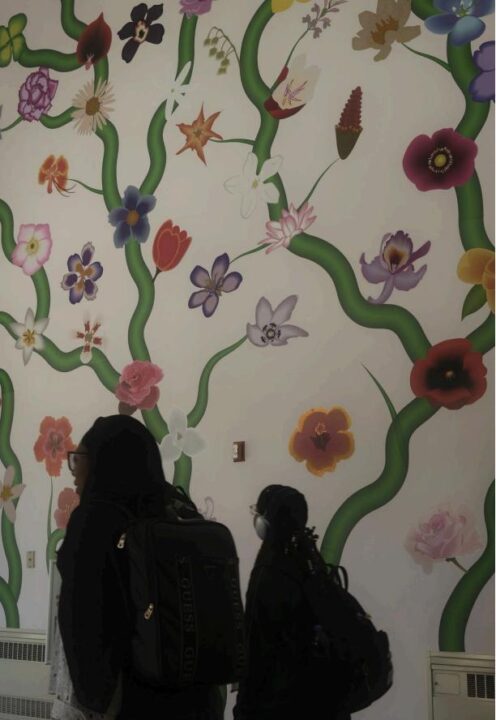The extremists bashed Associated Press property with a flag, twisting the camera equipment into a noose and hanging it from a tree. They marched onto the steps of the Capitol, broke windows and rifled through the belongings of senators and congresspeople. It was a day of hatred, filling the air with smoke and gunpowder while journalists were beaten in the street.
It was insurrection of a proportion that this country hadn’t seen since the 1800s, though it must be said that the United States funds coups and destabilizes countries all across the world. In our own capital city, white supremacists desecrated the Capitol building, forcing lawmakers to evacuate to undisclosed locations.
All the while, the rioters were protected by their whiteness, a clear display of white supremacy. Pictures flooded social media showing the police presence during the Black Lives Matter protests. Officers had filled the streets, attacking innocent and peaceful protesters. These images were a stark contrast to those that showed the police opening gates and allowing the pro-Trump extremists to surge into the Capitol and flood the chambers.
And through it all, Gannett emailed their reporters, reminding them not to “take a political position” on social media. Inspired by my fellow journalist, Janelle Salanga, who tweeted that “[journalists] should be coming out strongly against white supremacy right now and if that is being deemed “too political” for a news org, that’s absolutely bullshit [because] of the ways in which media has perpetrated and protected white supremacy in [America. Media] is political,” I paused, introspective as a student journalist in this industry.
Historically and in contemporary America, journalism has not reflected the communities it purports to serve. Journalists of color constituted 4 percent of daily newspaper reporters in 1978, right before the American Society of News Editors first committed to prioritizing more diverse newsrooms.
For journalists of color, this false concept of ‘too political’ or ‘objectivity’ is diametrically opposed to our own personal lived experiences and personal biases. Many young journalists attend institutions that prioritize taught objectivity, but journalism’s close relationship with whiteness makes it so that this idea of objectivity upholds white supremacy.
And the vicious cycle of white professors teaching young writers how to write for their audiences creates an illusion of objectivity, when in fact, white journalism professionals are actually teaching their students to write for a white audience. Sue Robinson and Kathleen Bartzen-Culver write in “When White reporters cover race: News media, objectivity and community (dis)trust” that “rejecting an objectivity that falsely equates diverging sides of an issue or privileges elite sources, interpretive reporting argues that journalists make sense of communities along with the people who inhabit them.”
Bad journalism, reliant on some misleading idea of “objectivity,” deeply harms communities of color. When the Watts Riots occurred, The Los Angeles Times failed to accurately cover the subject matter, and as Doug Smith, a senior editor at The LA Times put it in a retrospective piece entitled “Stunned by the Watts riots, the L.A. Times struggled to make sense of the violence:” “the Times’ coverage wandered from the unchallenged invective of ‘the streets’ to the unchallenged invective of two figures who would come to symbolize rigidity and repression: Mayor Sam Yorty and Police Chief William H. Parker. … One story proclaimed the area ‘totally devoid of effective community leadership,’ echoing a quote from Parker that there was no reason to try to resolve the conflict in meetings.”
And thus, journalism once again finds itself at a crossroads. Some outlets sent messages like Gannett, urging journalists to ignore the obvious: violence, white supremacy, intimidation and insurrection should be denounced; inequity should be pointed out. Others, like the National Public Radio, chose the right path, telling it as it is. Lulu Garcia-Navarro shared on Twitter that NPR “won’t be calling the people who stormed the Capitol ‘protestors’ — they are ‘pro-Trump extremists’ and what they are doing is ‘insurrection.’” The New York Times, The Washington Post, The Wall Street Journal and others changed their terminology from ‘protesters’ to ‘extremists’ and changed ‘protest’ to ‘mob.’
When racist crises occur, the industry and those who lead it must think before they speak. There is no ‘objectivity’ when it comes to racism, bigotry, violence. These are all despicable acts, and by pretending that there are “fine people on both sides,” we lose integrity, siding with hatred, while also asking journalists of color to set aside their identities.
As Yamiche Alcindor, a correspondent for PBS NewsHour, told The Atlantic, “When something is racist, we should just say it’s racist…When someone is lying, we should just say they’re lying.”



